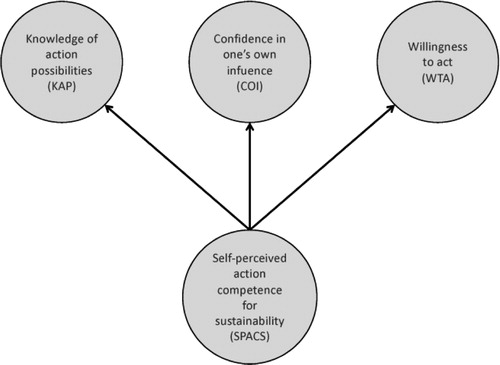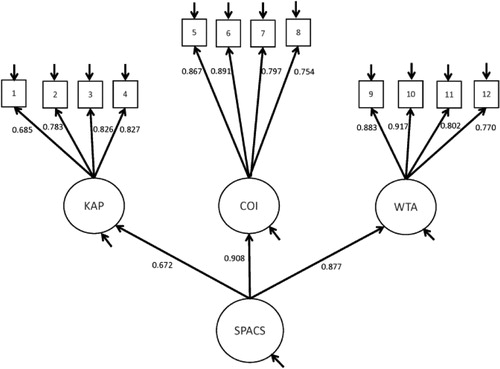Figures & data
Figure 1. Theoretical model of the self-perceived action competence for sustainability (SPACS) concept with its sub-constructs knowledge of action possibilities (KAP), confidence in one’s own influence (COI) and willingness to act (WTA).

Table 1. The items and sub-scales of the self-perceived action competence for sustainability questionnaire, SPACS-Q.
Table 2. Number of participants and girl:boy ratio.
Table 4. Descriptive statistics for the SPACS-Q items.
Figure 2. The factor structure of the self-perceived action competence for sustainability (SPACS). KAP = knowledge of action possibilities, COI = confidence in one’s own influence and WTA = willingness to act.

Table 3. Cronbach's α for the SPACS-Q and the SCQ-S and its sub-scales.
Table 5. Pearson's correlations (r) between the SPACS-Q and the SCQ-S
